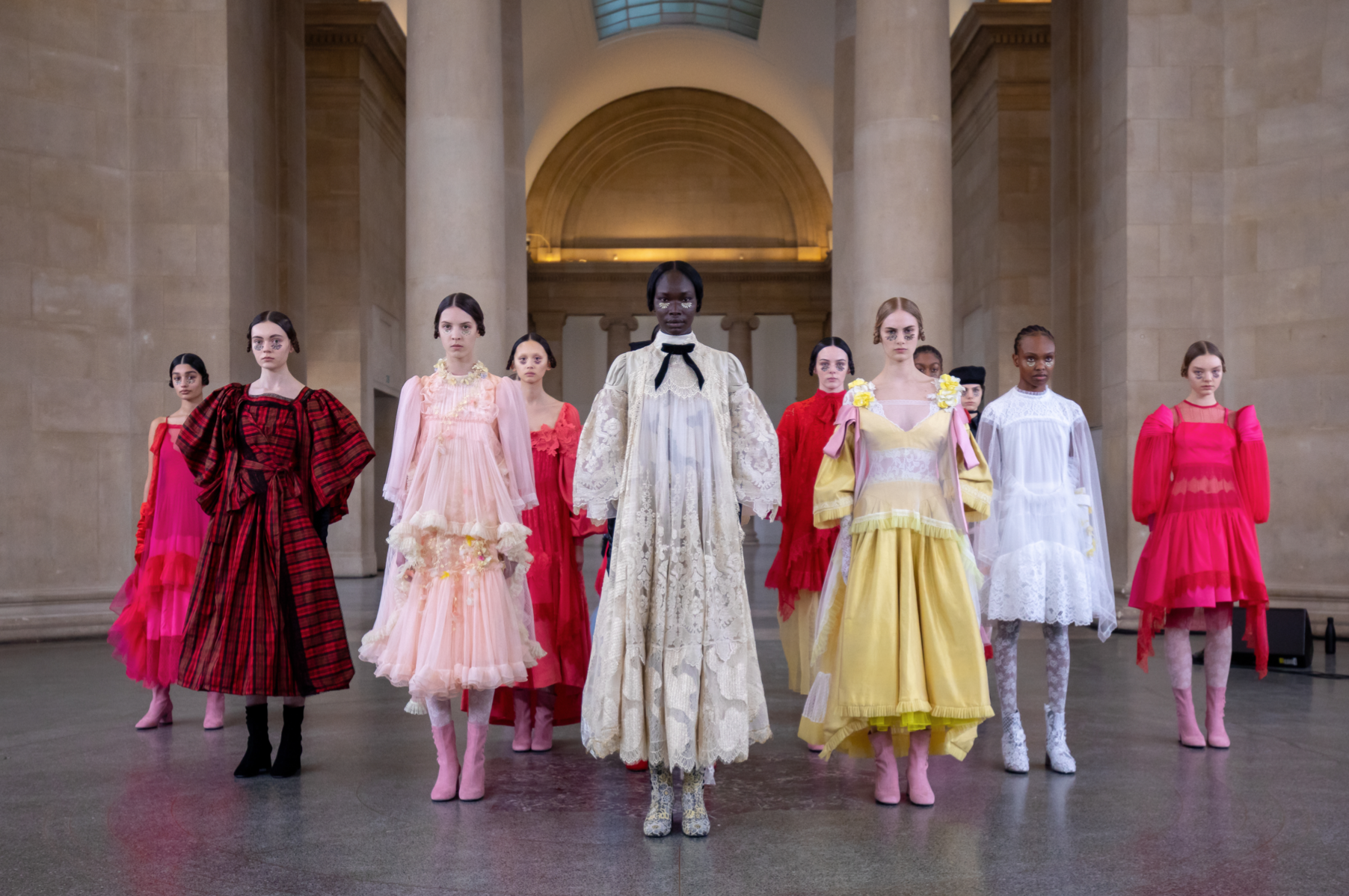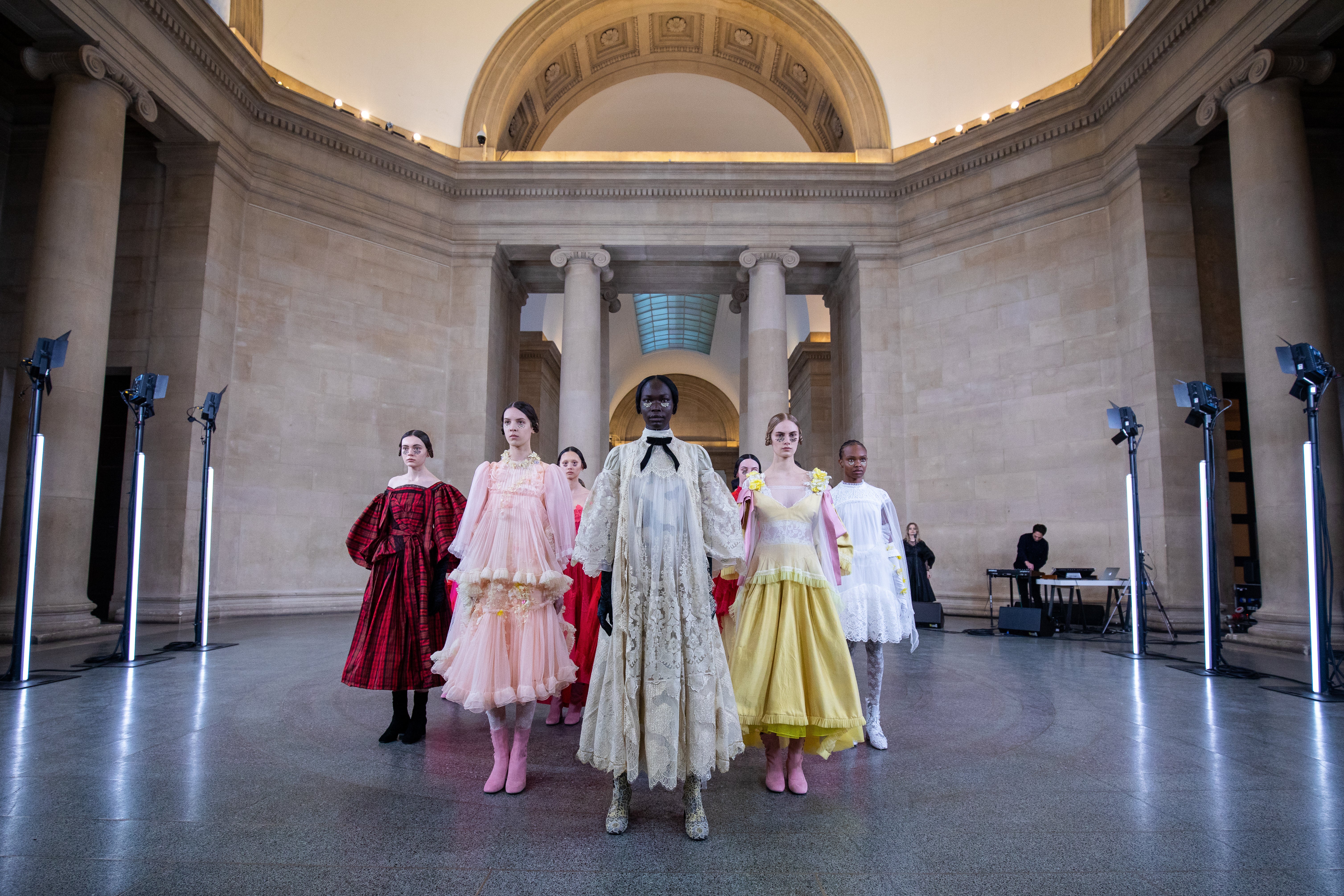London Fashion Week: Brands are using the pandemic as a chance to recalibrate
As London Fashion Week gets underway as an entirely digital affair, Olivia Petter looks at how labels are exploring sustainable outerwear and statement leather


When London Fashion Week was forced to adopt a new mostly digital model back in September, few foresaw this becoming the norm for the biannual event, one that is traditionally all about pomp and pageantry – the kind that happens in real life rather than on Zoom. Six months later, though, and here we are again: locked down and sequestered with our screens as the pandemic rages on.
But the show, as they say, must go on. Not least because non-essential retail has been closed for much of last year, resulting in a major blow to fashion businesses across the industry. Earlier this month, the British Retail Consortium announced its biggest fall in sales for non-food stores on record, with footfall down by 24 per cent, resulting in a £22bn loss. In January, Caroline Rush, chief executive at the British Fashion Council, stressed the value of London Fashion Week at this precarious time, revealing that the BFC had been working closely with the government to find a way for the event to proceed during lockdown.
“This further lockdown is incredibly challenging for businesses, freelancers and individuals,” she said. “We will continue to push for support and champion our extraordinary businesses to global audiences. Despite all the challenges the last few years have brought, I truly believe that the creativity, agility and business savvy of our sector will prevail and the societal consciousness of our British businesses and fashion workforce will see us re-calibrate to not only be strong creatively but strong sustainably too.”
Re-calibration was certainly the theme of the day as brands set about debuting their autumn/winter 2021 collections on Friday. Proceedings began with socially conscious designer, Bethany Williams, whose capsule coat collection offered a sustainable, and gender-neutral twist on the standard spectacle that defines London Fashion Week.
The nine-piece collection, which will be sold exclusively at Selfridges, comprises a series of oversized upcycled blanket coats made from organic cotton sourced in Wales. The result is a series of colourful coats – think double-breasted knee-length coats and cropped furry styles – that combine clashing patches from different blankets to create one-of-a-kind designs.
The blankets came from all over, including flea markets and car boot sales, but one of the most special ones - a very rare and typically very expensive Welsh wool blanket - came from Sunbury Antiques Market at Kempton Racecourse, and features an array of brightly coloured pink and orange patches that have found their way onto Williams’ coats.

“It was a very organic process,” Williams says of creating the coats. “We had to work with what we found.” The pandemic had a huge impact on the concept of the idea, she explains, given that comfort has become of paramount importance this year. And what could be more comfortable than a blanket?
And, as has become par for the course with Williams’ collections, which are known for being philanthropic, 20 per cent of profits will be donated to The Magpie Project, which supports homeless mothers and their children.
Of course, at times like these, it’s more than about pure aesthetics. “A blanket is so much more than a piece of fabric,” says Williams. “It is a feeling of comfort and shelter and I wanted that feeling to be at the heart of this capsule collection.”
Bora Aksu opted for a different tact, though no less appealing as we sat watching in our tracksuits from behind screens. The Turkish-born designer live-streamed his runway from an empty Tate Britain, whose neo-classical architecture provided quite the backdrop for a French Revolution-themed collection.

In what is one of the few live-streamed fashion shows of the season, models floated through the bare walls of the British landmark to the sonorous sounds of musician Alison Sudol in an array of ethereal Victorian smocks, complete with high-necks, frilled hems, and layers upon layers of frothy tulle. Colour-wise, Aksu sought to uplift through a palette of yolk yellows, buttercreams, and pastel pinks, paying homage to that childlike breed of creativity that we’ve all had more time to indulge this year.
Aksu’s collection drew inspiration from French mathematician and physicist Sophie Germain and her defiance of gender norms in the early 19th century, but he also leveraged the power of isolation, explaining he felt a kinship with Germain, who was isolated at a societal level due to her passion for mathematics, an unacceptable pursuit for a woman of the era. This, Aksu says, “allowed her to find the ideas that would drive her for the rest of her life”. The mathematician had, he said, showed him “that even in the bleakest of times, there is always hope, if one chooses to seek it.”

The result is a collection that epitomises the French national motto: “Liberté, Egalité, Fraternité ou la Mort” in every way. And while there are no direct references to the pandemic as there were last season – Aksu sent models down the runway with organza face masks – there was no denying its influence on his vision for the collection.
Isolation changed more than just the collections of designers this season as Temperley decamped from its Mayfair base to Somerset, from where the label’s eponymous founder, Alice Temperley, hails, in a bid to rediscover its heritage and champion slower, and more local, craftsmanship. It’s a move that has clearly impacted the brand’s focus for this season, which has gone from glitzy evening garb to wholesome knits (much like our own wardrobes).
Where there once would have been streams of sequin gowns, there are unisex duffle coats, oversized hooded sweatshirts, and plenty of cable knits. “We really need to be very on point with what’s happening in the world right now,” Temperley tells The Independent. “We need things to be comfortable and items that we can wear every day alongside the enjoyable and more euphoric pieces.”
This season, such euphoria can be found in Temperley’s luxe velvet tailoring (we’ve got our eyes on a deep grape double-breasted suit) and stretchy fitted gowns that feature lattice backless cuts. There’s a lot of statement leather, too, in the form of jumpsuits, trousers, and a firework-embellished jacket.
But the real recalibration for Temperley comes in the form of sustainability. Not only will the brand’s new business model (they will now be producing just two collections a year as opposed to four) result in a lower carbon footprint due to the significant drop in production, its new location, and a little thing called Brexit, has also meant that more of its clothes are being manufactured locally. “Made in England” labels now attach themselves to the insides of waterproof jackets made from recycled plastic bottles, while Temperley tells me they’ll be producing more limited edition pieces to reduce fabric waste.
“We’re becoming more authentic and looking at what our story is,” she explains. “It’s a different churn now. So we’re building relationships with local manufacturers and really slowing things down.” It’s the antithesis to fast fashion the industry needs now more than ever.
Join our commenting forum
Join thought-provoking conversations, follow other Independent readers and see their replies
Comments
Bookmark popover
Removed from bookmarks